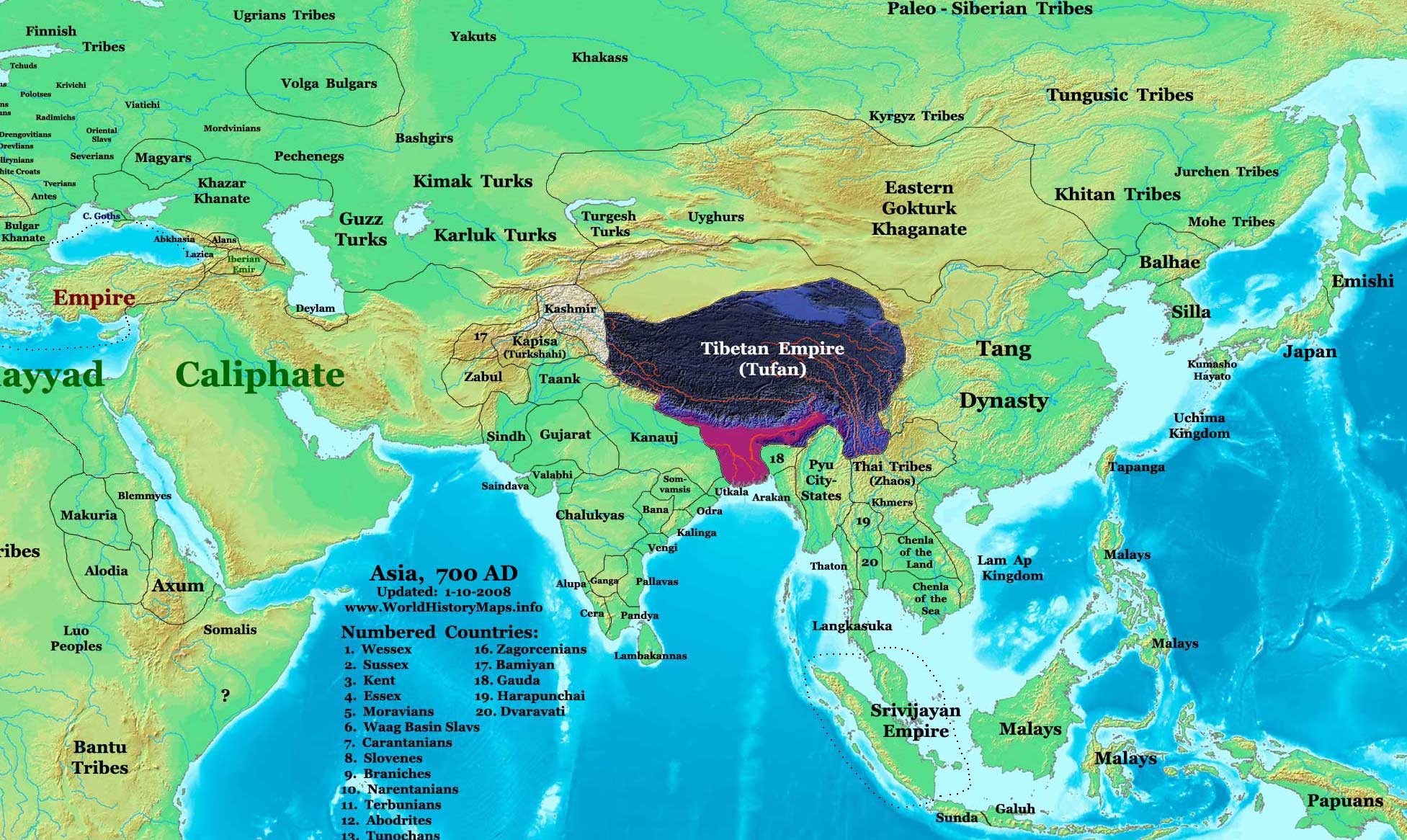https://www.worldhistorymaps.info/wp-content/uploads/2021/03/tibet_700ad.jpg
https://www.worldhistorymaps.info/wp-content/uploads/2021/03/tibet_800ad.jpg
The Tibetan Empire (Tibetan: བོད་ཆེན་པོ, Wylie: bod chen po, lit. ‘Great Tibet’)[note 1] existed from the 7th to 9th centuries AD when Tibet was unified as a large and powerful empire, and ruled an area considerably larger than the Tibetan Plateau, stretching to parts of East Asia, Central Asia and South Asia.
Traditional Tibetan history described the exploits of a lengthy list of rulers. External corroboration is available from the 7th century in Chinese histories. From the 7th to the 9th century a series of emperors ruled Tibet. From the time of the emperor[citation needed] Songtsen Gampo the power of the empire gradually increased over a diverse terrain. By the reign of the emperor Ralpacan, in the opening years of the 9th century, it controlled territories extending from the Tarim basin to the Himalayas and Bengal, and from the Pamirs to what are now the Chinese provinces of Gansu and Yunnan.
The varied terrain of the empire and the difficulty of transportation, coupled with the new ideas that came into the empire as a result of its expansion, helped to create stresses and power blocs that were often in competition with the ruler at the center of the empire. Thus, for example, adherents of the Bön religion and the supporters of the ancient noble families gradually came to find themselves in competition with the recently introduced Buddhism. The empire collapsed into civil war in the 840s.
Source: Wikipedia

